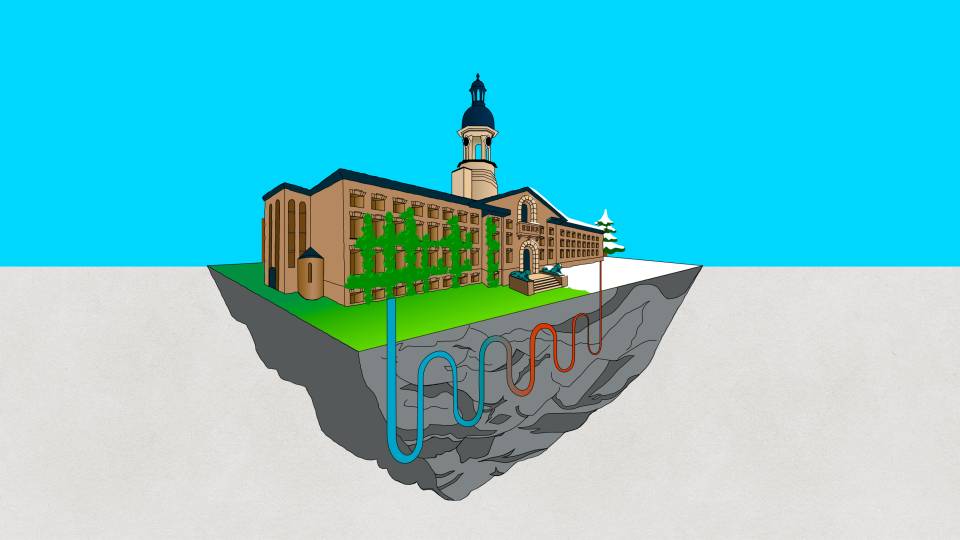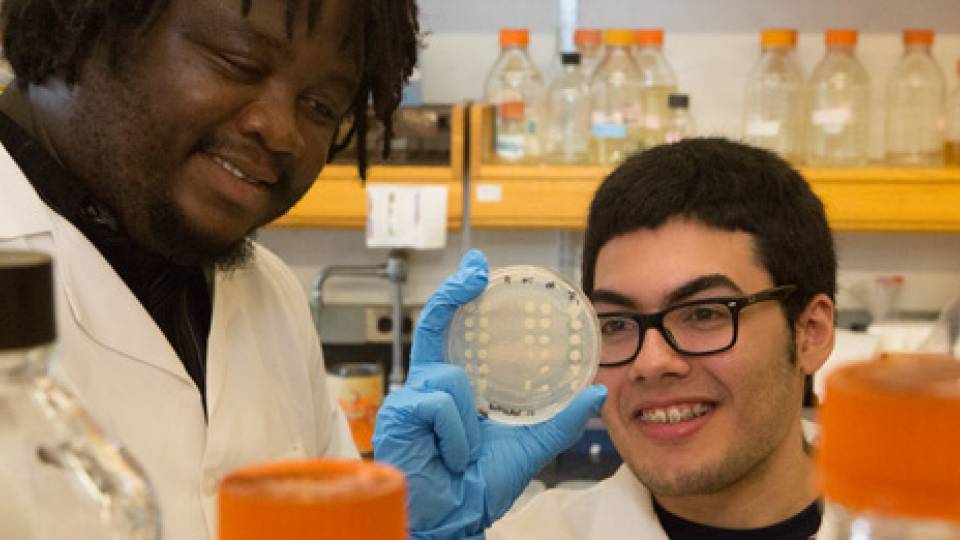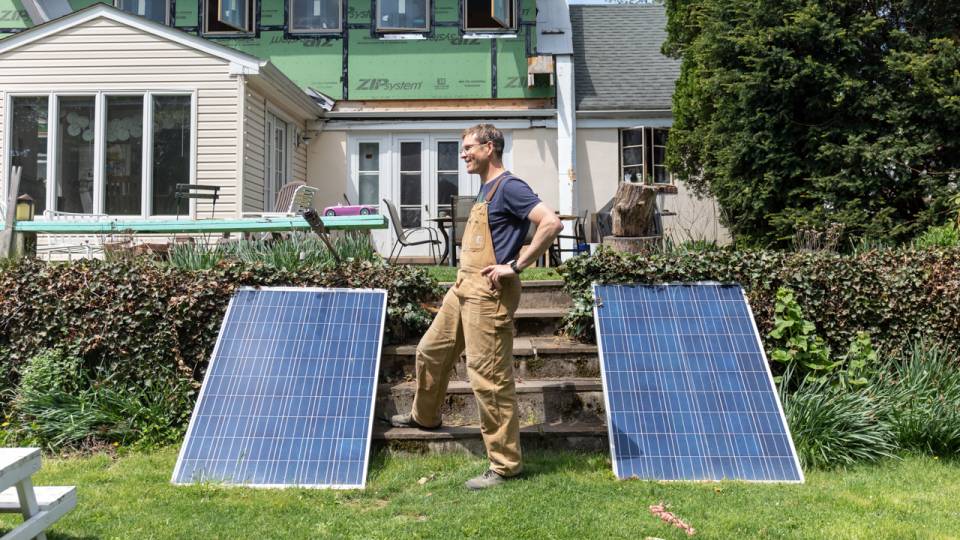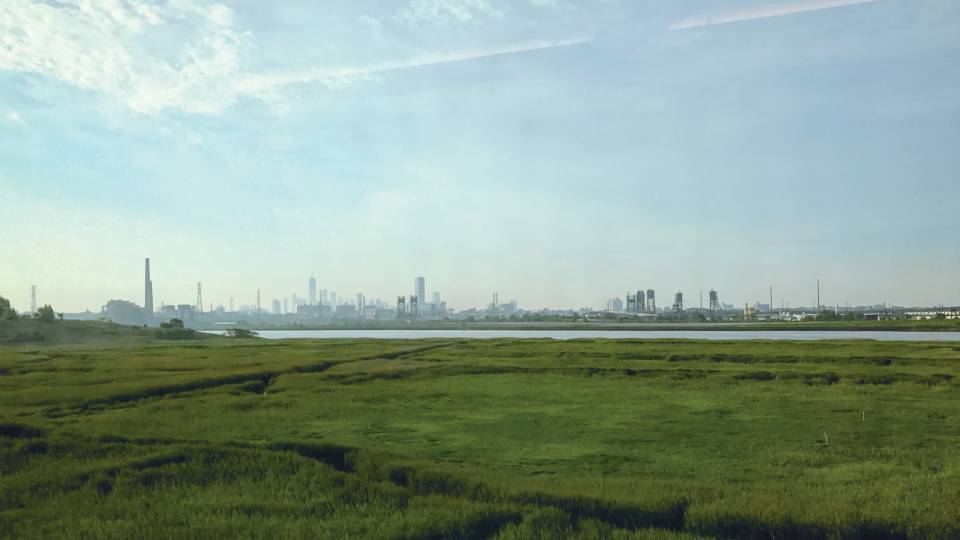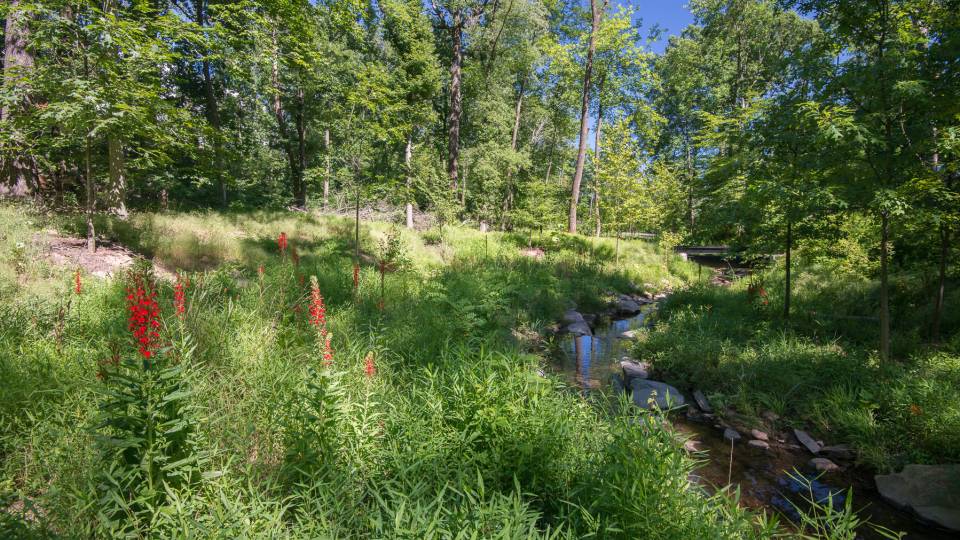Cities. They sprawl and tangle, juxtaposing ancient public squares and glistening skyscrapers. They provide homes for half of humanity, and economic and cultural centers for the rest.
It has taken us thousands of years to build today's urban centers, and yet, they're expected to double in land-area in just the next few decades. "Half the urban infrastructure we will be using in 2050 has not yet been built," said Elie Bou-Zeid, an associate professor of civil and environmental engineering at Princeton.
Though this growth is inevitable, the way these cities will expand is not. Rather than repeat the sprawling and uncoordinated development patterns of the past, researchers like Bou-Zeid and others in Princeton's School of Engineering and Applied Science are exploring new ways to build urban infrastructures to serve our growing population, changing civilization and warming planet.
These intelligent cities will require buildings that heat and cool themselves on a limited energy budget. They'll require bridges and other infrastructure built with the flexibility to adapt to a changing global climate and rising sea levels. And they'll require innovations in the networks that supply cities with water and energy. These ideas — from new building materials to continent-spanning electrical grids — have the potential to shift urban development away from the present-day jumble of strip malls, suburbs and shantytowns toward the resilient cities of the future.
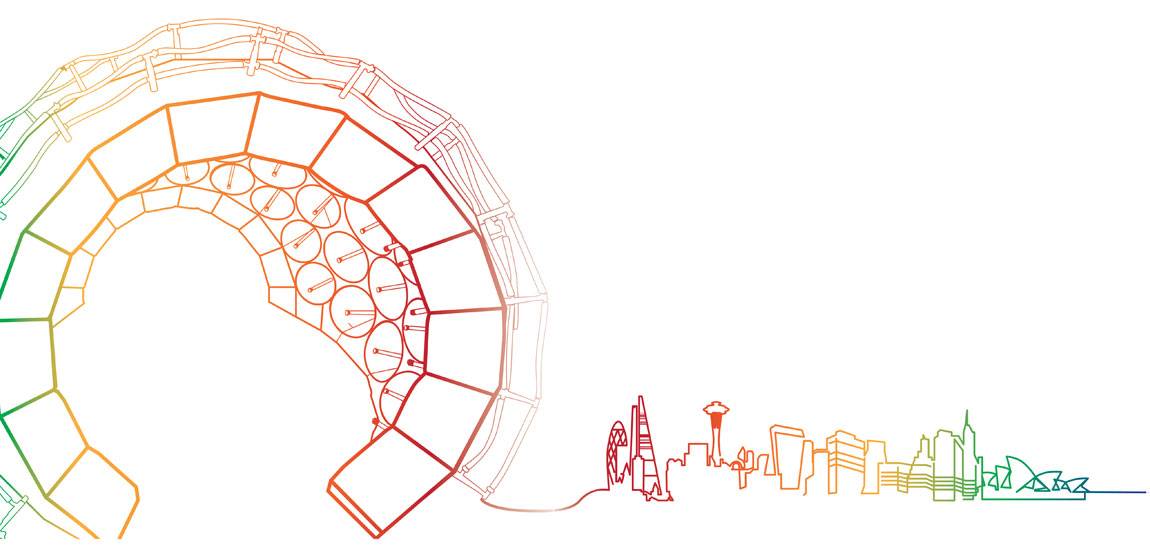
An artistic rendition of the Thermoheliodome, a pavillion that cools itself via evaporation using mirrored panels that reflect heat toward water-cooled pipes. It is one of several energy-saving concepts from Forrest Meggers, who is jointly appointed in Princeton’s School of Architecture and the Andlinger Center for Energy and the Environment. (Illustrations by Matilda Luk, Office of Communications)
Clever buildings
The basic unit of these smarter, resilient cities is the intelligent building. Assistant Professor Forrest Meggers, who has a background in architecture and engineering, has a number of plans for making buildings smarter about how they heat and cool their indoor spaces. Often these heating and cooling systems involve water, which readily absorbs heat that is then shed through evaporation.
In one structure called the Thermoheliodome, the interior is coated with mirrors at odd angles to reflect heat toward water-cooled pipes. In another, the interior cools itself with evaporation through an external membrane that traps liquid water while allowing water vapor to escape. By demonstrating the effectiveness of these innovative ideas, Meggers, who has a joint appointment in the School of Architecture and the Andlinger Center for Energy and the Environment, hopes to show other architects that it is possible to make more effective and more attractive heating and cooling systems.
Meggers' structures take advantage of two different ways heat is transferred: It can be carried by molecules of warm air or water, or it can radiate like light directly from surface to surface. Thermometers, which measure air temperature, don't capture the effects that radiative heating and cooling can have on a building's occupants, so Meggers developed a radiative heat-sensing camera. About the size of a thermostat, the camera captures a 360-degree view that researchers can use to build a 3-D model of the radiative surfaces in any room.
To investigate urban radiant-heat exchanges, Meggers' students took similar devices to New York City, about 50 miles northeast of Princeton. The resulting thermal photographs enabled them to see how heat lingers in alleyways and clusters around window-mounted air conditioners. By seeing the heat, architects and engineers can improve their designs for optimal energy efficiency.
Optimal cooling is the goal of one project that Meggers collaborated on with Dorit Aviv, who earned her master's degree in architecture in 2013 and is now a doctoral student at Princeton. The building is called the Cool Oculus and is designed to keep cool in the desert heat through a combination of evaporation and shifting shape. The researchers built the Cool Oculus as a prototype on the Princeton campus, and have secured a grant from the New York-based Tides Foundation to build a full-scale model and measure its capabilities.
During a hot day, mist flows into the Oculus' central chimney and evaporates to cool the air within, which sinks as a refreshing breeze into the building. Meanwhile, the structure's foundation absorbs excess heat, which it releases at night when the chimney widens to expose the foundation to the cool night sky. Combined, these effects can turn 100-degree desert heat into a comfortable 75 degrees.
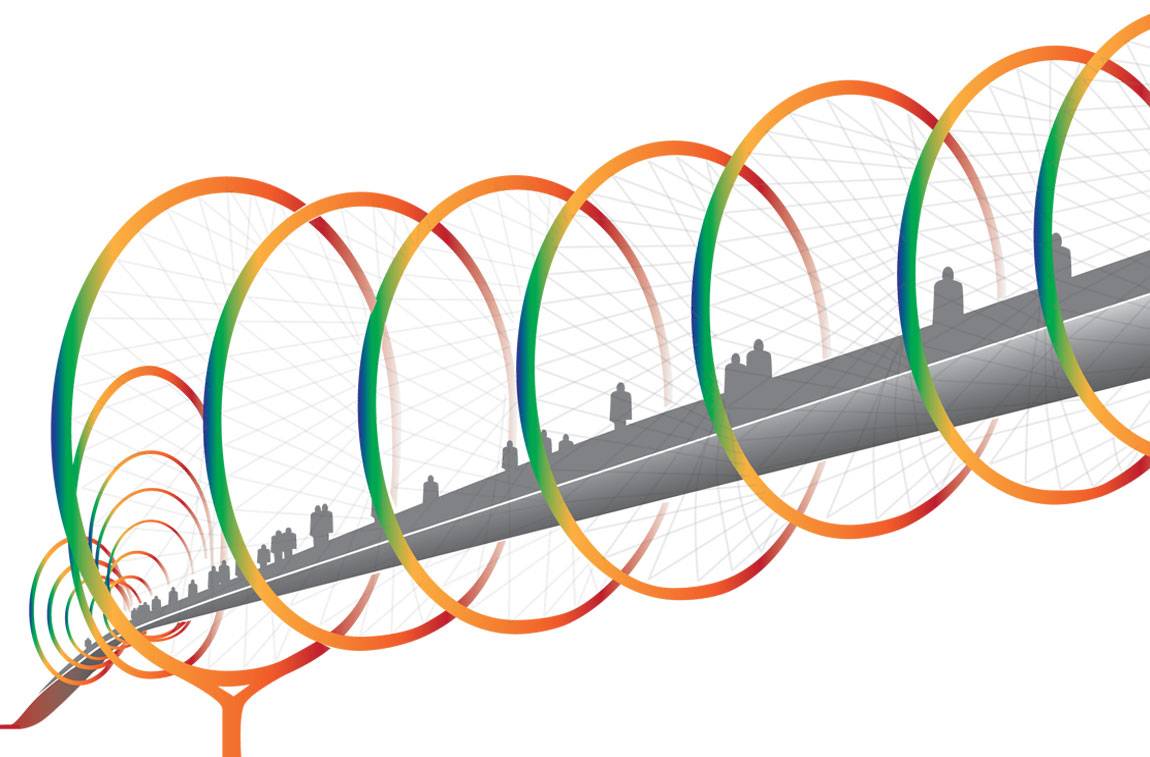
Like forms in nature, engineering professor Sigrid Adriaenssens' structures often show striking curves, from spiraling earthen garden walls and arching steel footbridges, to shell-shaped pavilions that keep out direct sunlight while admitting scattered light and breezes.
Inspired by nature
The Oculus moves on a daily cycle, but Sigrid Adriaenssens, an associate professor of civil and environmental engineering, has designed structures whose real-time response to heat is built into the material itself. In a transparent case above her desk, Adriaenssens displays three structures that could pass for the leaves of a cyborg Venus flytrap. They each are made of white translucent shells curving off a central metallic strut.
The resemblance to a flytrap is not coincidental. Adriaenssens designed the structures with inspiration from the waterwheel plant, an aquatic cousin of the flytrap. This shape allows the entire structure to open or close in response to a small movement of the central strut. The strut, in turn, is made of two metals that expand differently when heated, so the shell expands significantly with a small increase in temperature. Adriaenssens envisions that these shells, which were developed with funding from the Andlinger Center for Energy and the Environment, could cover a building's entire façade. On hot days, the shells would expand and block heat from streaming in through the windows.
Structures like these, which make clever use of materials and their form, will be the key to affordable and efficient structures in future cities, according to Adriaenssens. To make these structures, Adriaenssens and her team use computer simulations to calculate the structure's optimal form. Like optimized forms in nature, Adriaenssens' structures often show striking curves, from spiraling earthen garden walls and arching steel footbridges, to shell-shaped pavilions with slats to keep out direct sunlight while allowing in scattered light and breezes. Nor are the spreading leaves Adriaenssens' only dynamic structure: To protect coastlines from storm surges while keeping them visually uncluttered, she has designed thick elastic spherical membranes that will inflate and press together to hold off the waves.
Water world
Where does the water that surges around Adriaenssens' barriers go? Where does the water that cools Meggers' buildings come from? To plan something as complex as a future city's water system requires not just understanding the interactions between structures like these, but understanding how the structures and the people affect each other. Such an undertaking requires cooperation between researchers from many different fields, and an understanding of the successes and failings of many different cities, according to Bou-Zeid.
Bou-Zeid grew interested in cities when he was a mechanical engineering undergraduate at the American University of Beirut in Lebanon. "I thought I would be designing racecars or airplanes, but environmental problems that involve the interaction of humans with their surroundings are more interesting," he said. During his graduate and postdoctoral studies, Bou-Zeid investigated how cities — with their skyscraper-created wind canyons and their innumerable sources of heat and steam — fundamentally alter the movement of air around them.
Bou-Zeid is interested in how this airflow affects an invisible but critical part of cities' water systems: evaporation. Before a city is built, water evaporates out of plants and earth, cooling the area. But in built-up areas, dark asphalt absorbs heat. Water flows off impermeable pavement into storm systems before it has the chance to evaporate and take heat away with it, trapping heat in the buildings and the streets. This trapped heat can warm cities by 10 to 15 degrees Fahrenheit higher than the surrounding countryside. The so-called urban heat island raises energy consumption and contributes to climate change as we burn fossil fuels to cool ourselves.
Parks, greenbelts and green roofs covered in plants can solve this problem by encouraging cooling through evaporation, Bou-Zeid said. But it is not as simple as planting trees: While Baltimore's greenbelts have cooled it significantly, drier cities like Denver and Phoenix may be better off saving water by cooling with traditional air conditioning. "How do you compare the value of a gallon of water and a kilowatt-hour of energy in different cities?" Bou-Zeid asked.
Bou-Zeid's attempts to answer this question, and similar studies by other researchers in every aspect of the water cycle, led to the formation of the Urban Water Innovation Network. The network, supported by a five-year grant from the National Science Foundation, includes engineers, architects and social scientists from 14 institutions who are studying how six American cities interact with water. Bou-Zeid, Princeton's team lead for the network, is working with colleagues at the University of Maryland and Arizona State University to create software that will model everything water can do in a city. Such software could be used to predict the benefit of new water projects while accounting for local climate and geology.
The wildest possible experiments
To ensure that the urban landscape is accurately represented in such simulations, Professor James Smith is leading a team of researchers from five universities in the Urban Water Innovation Network to produce extremely accurate maps of the rainfall and flooding in each of the cities. For Smith, the William and Edna Macaleer Professor of Engineering and Applied Science and professor of civil and environmental engineering, such studies of real cities are the only way to understand urbanization's present and future effects.
"In cities," he said, "the wildest possible experiments are being carried out for you." Rivers are rerouted. Vast tracts of land are paved over. Artificial shorelines and skylines change the flow of water and air. It is up to researchers to watch and learn from these unprecedented alterations to the land and environment.
Collaboration within the network leads in surprising directions. Meggers, also a member of the network, found a way to combine his interest in efficient heat transfer with the water systems. With Sybil Sharvelle, a professor at Colorado State University, he is designing wastewater systems that recapture the heat from showers and other uses of hot water.
When the project ends in 2020, the network will release a report detailing its findings and recommendations for the cities under study. The research covers an environmentally diverse collection of cities so that the suggestions can be useful to cities across the country and, in some cases, around the world.
In the meantime, the network connects researchers and government officials to craft individual recommendations on short-term projects. "We ask the policymakers what they need to know, and try to understand their constraints so that our recommendations can be implemented," Bou-Zeid said.
It's not the first time Bou-Zeid has worked to make small, efficient changes to cities. Simply painting black roofs white so that they reflect more light keeps buildings cooler and saves energy and money.
New York City has implemented this idea via their °CoolRoofs program, through which thousands of volunteers have painted roofs white since 2009. These efforts provided Bou-Zeid with more data than he could ever have achieved in a laboratory. He is using data from this experiment in conjunction with his models of urban air and heat flow to determine the cost and energy savings of painting roofs white.
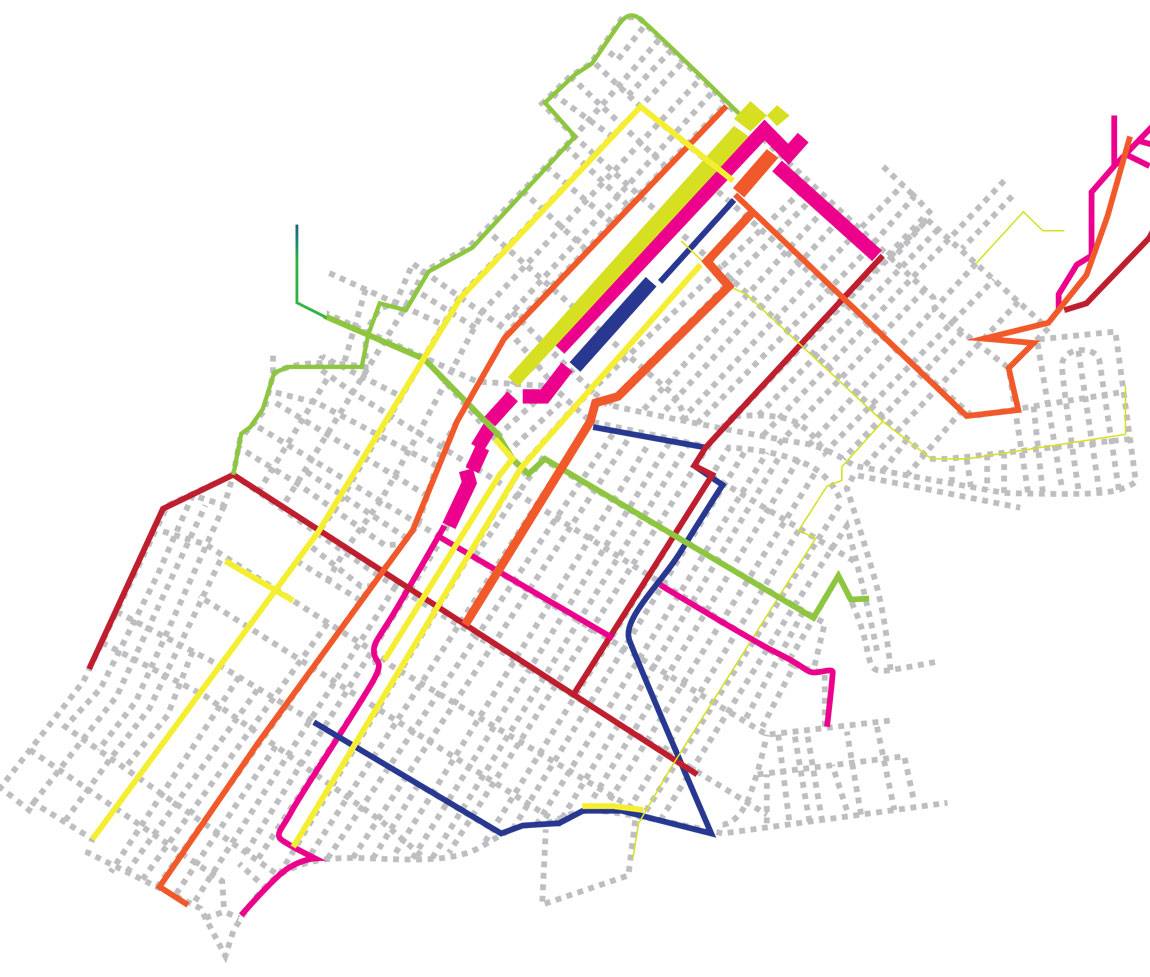
Resilient cities require resilient power grids. Professor Warren Powell is designing smart models that optimize the use of wind and solar power despite variability due to wind shifts and cloud cover.
Networks and grids
Painting roofs white is a relatively easy modification to make to a city, but other modifications require a new way of thinking. Our cities are already in need of upgrades to electricity supply and delivery systems. Going forward, our electricity will increasingly come from renewable sources such as solar and wind power, which, while better for the environment, can vary due to wind shifts and cloud cover.
With renewable energy making up only about 10 percent of power production in the United States, this variability is not yet an issue, said Warren Powell, a professor of operations research and financial engineering who studies networks such as electrical grids and transportation systems. "But I see us hitting problems at about 20 percent renewables," Powell said.
This variability makes it hard to fully replace coal, the traditional workhorse of electricity generation, and natural-gas turbines, which can be ramped up quickly. "When the dust clears in 40 years, we're still going to have some fossil energy," Powell said. While large, efficient batteries could store wind and solar power and release it as needed, the marginal cost of battery storage increases as more batteries are added to the grid. "It is going to be hard to fight this curve," he said.
Changes in how the power grid operates could help. Powell recently began a project in Brazil, where a drought has cut into its heavy dependence on hydroelectric power. Powell has begun working with a group of Brazilian power companies to study strategies for managing the variability from the influx of wind power. Because of wind's variability, this is not simply a matter of replacing one power source with another. Instead, Powell will be supervising the development of Brazil's first grid model that can closely simulate the variability of wind. This model will be used to develop robust management policies and energy portfolios that would help Brazil optimize an energy system that depends heavily on wind and solar.
New technologies deployed smartly will help, Powell said. For example, self-driving electrical vehicles can decrease congestion in dense cities and lend their batteries to the electrical grid, selling power when the city needs it most and recharging overnight from the grid's excess capacity.
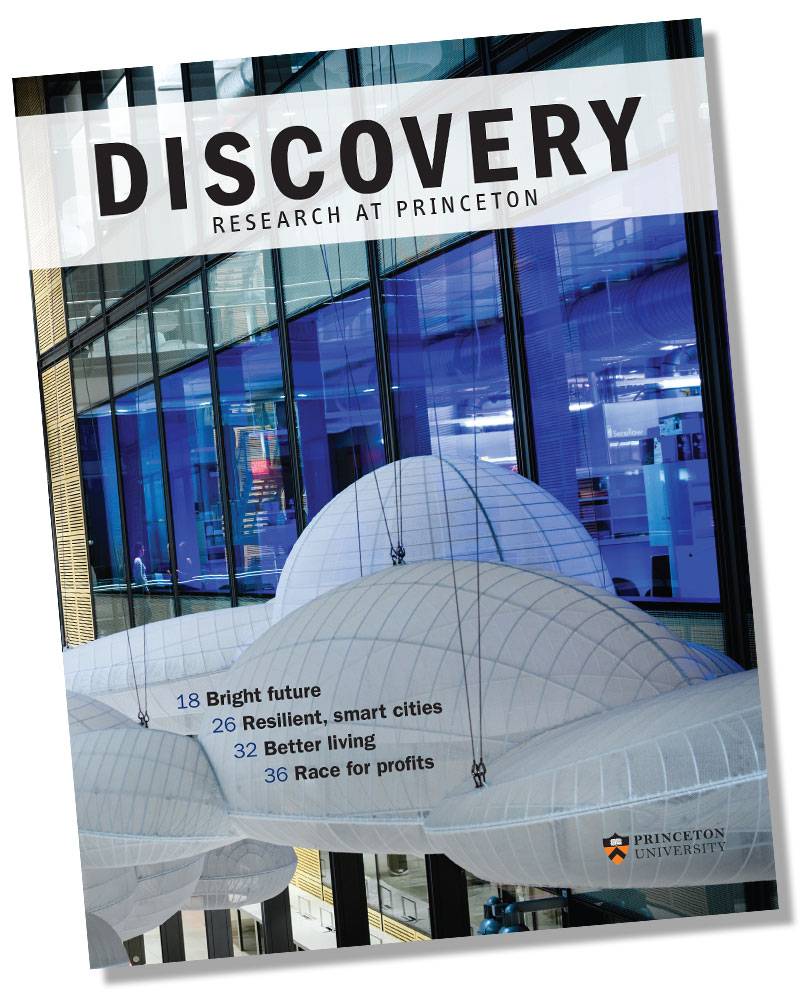
Ultimately, these changes in technologies and policy must work within the economic and social constraints of existing cities. Failing to understand and anticipate urban changes and growth leads to not just bad policy, but unenforceable policy, Bou-Zeid said. If a city tries to prevent urban growth, for example, by limiting new housing, the city will often still grow, but in unregulated and unhealthy shantytowns on the periphery. "You must accept urban expansion — you have to work with it," Bou-Zeid said.
But the size and inertia of cities is an opportunity, too, Meggers said. "Cities have the power to make a change."
If researchers and policymakers at Princeton and in cities around the world can collaborate, making clever use of form, physics and interacting components as a part of urban planning, then that change will be a positive one.
This article was originally published in the University's annual research magazine "Discovery: Research at Princeton."
